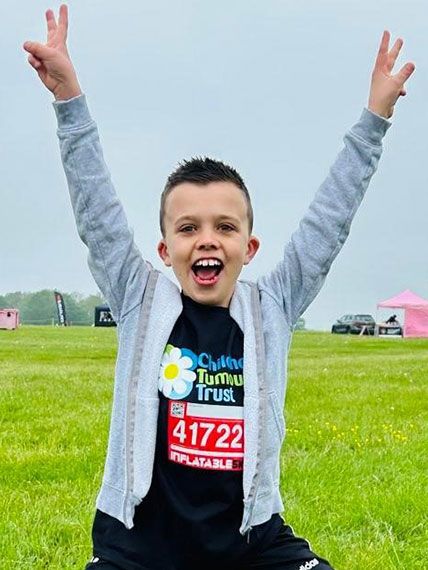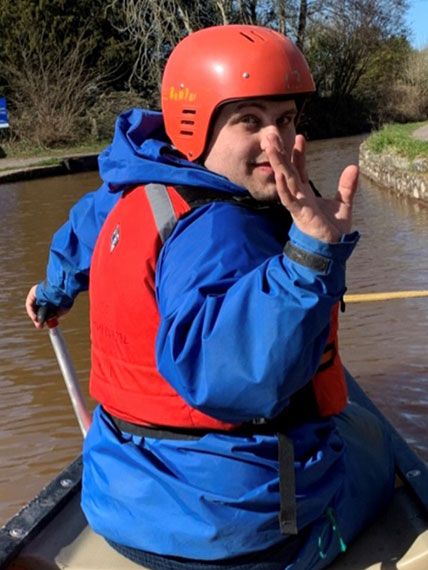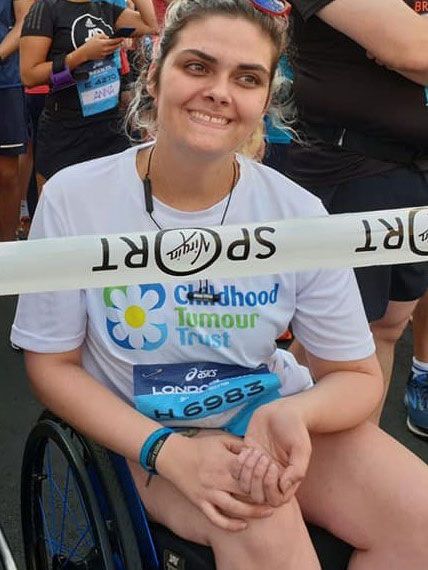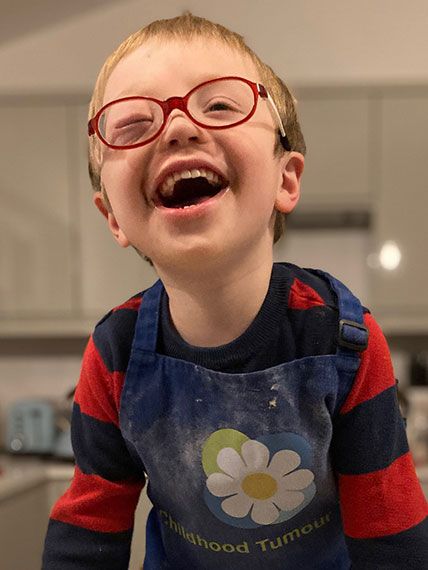Case studies
Our stories of living with NF1

Austin
Our son Austin is 8 years old. He was diagnosed with NF1 aged 3 after we noticed many café-au-lait marks and freckling. The journey to diagnosis was a struggle, but was confirmed after genetic testing. No-one in the family carries the gene. Austin is hypermobile, has speech and language difficulties and some mild learning differences. He is currently classed as ‘mild’. Austin has a diagnosis of autism and thrives in education. He is an elected school ambassador and also a keen member of the chess club.

Dan
I know I don’t look like there’s anything “special” about me, but I was born with a rare disease called Neurofibromatosis type 1 (NF1). NF1 is a genetic condition. It can be passed down from parent to child, or, as in my case, it can be a spontaneous genetic mutation. NF1 causes tumours to grow along nerve routes. Some people will have lots, other will have very few. They can grow internally or externally. My tumour grew internally on my optic nerve. I underwent 18 months of chemotherapy, which so far has stopped my tumour from growing. NF1 can also cause learning difficulties, autism and ADHD, all of which I have.

Clare
My Mum first noticed my café-au-lait marks when I was a baby but her concerns were brushed off by medical professionals. Thirty years ago even fewer professionals really knew about neurofibromatosis. It wasn’t until my 3-year check that a doctor picked up on the way I walked (turning my feet inwards) and my café-au-lait marks, that I was referred and diagnosed. I went through school, college and university with very little support. Looking back now I should have had a lot more help, including assessments for learning difficulties and ASD/ADHD. Despite that I achieved good grades at GCSE and A Level, I went on to qualify as a children’s nurse and worked in the NHS on NICU and PICU for 17 years. I have a facial plexiform tumour for which I’ve had multiple surgeries but I don’t let NF1 hold me back.

Nicole
When my daughter Nicole was born, her café-au-lait marks were dismissed as birth marks. When she was 3 it was suggested that she had NF1 due to the café-au-lait patches and delayed speech. Nicole was the first in the family to be diagnosed with NF1 and it has been a learning curve. She has a large plexiform wrapped around her sciatic nerve, scoliosis and ASD. Despite most of her childhood going in and out of hospital for scans, surgery and appointments, and struggling through school, she is finishing her degree in Design Engineering living independently and travelling the world. She is proud of who she is and wants to advocate for others. In her words, she can do almost anything anyone else can – just sometimes a bit differently. Learning to live with NF1 will take time, and nobody can predict the pathway ahead but the important thing as a parent/carer is to be aware of changes in the condition, who to see and when, to recognise that NF1 is part of your child and everything else will follow.

Alfred
Our son, Alfred, was diagnosed at around 18 months after more than a year of medical professionals suggesting (or discounting) NF1 as a possible underlying condition. Alfred also has glaucoma, which was confirmed when he was just 3 weeks old and he had four operations in his first year of life to safe his sight. It is down to his eye consultant’s tenacity that we saw several different doctors and eventually a geneticist. The jigsaw of different medical views suggested that NF1 wasn’t likely but the genetic tests showed otherwise. No-one else in the family has NF1 and his condition is down to a spontaneous mutation. Alfred has a plexiform neurofibroma that is growing around his right eye. He’s had two operations to ‘debulk’ the tumour but each time it has grown back and a third operation is due soon. Thankfully, other symptoms are mild at the moment. He has just a few small café-au-lait patches and no other associated problems. However, we live in constant fear that this could change at any moment. Finding Childhood Tumour Trust has given us a sense of family and perspective. Alfred’s been able to meet other children with NF1, and joins in lots of activities that are accessible and inclusive, while parents can share their concerns or experiences knowing others will understand. It’s changed our journey and has helped us through some difficult times.